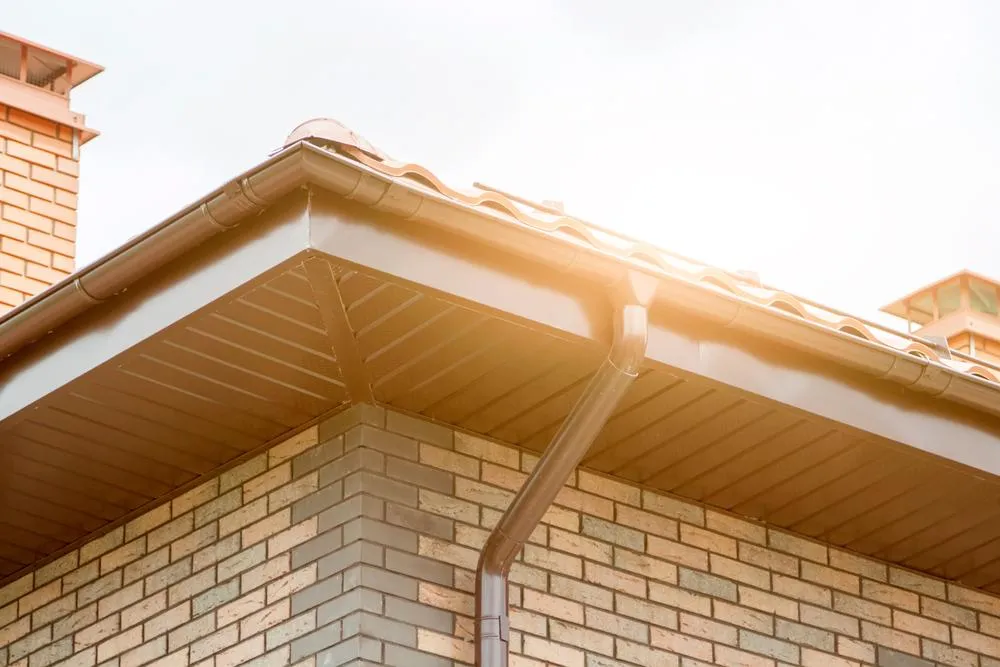
Signs Your Fascia or Soffit Needs Repair (Before It Gets Worse)
Your home’s gutters don’t work alone. Behind them are two critical features that protect your roof and exterior: the fascia and the soffit. The fascia board is the horizontal trim that supports your gutters and seals the edge of your roof, while the soffit is the underside that ventilates your attic and prevents moisture buildup.
In homes around Paducah, these components take a beating from rain, wind, pests, and Kentucky’s seasonal shifts. When they fail, water damage, mold, and even structural problems can follow. The good news? Your home will give you warning signs if you know what to look for. In this blog, we’ll explain the most common signs of fascia or soffit damage and why timely repair saves money in the long run.
Why Fascia and Soffit Matter
Many homeowners overlook the fascia and soffit until there’s a major problem. Yet these parts of your roofline are essential to protecting your home.
Fascia: Provides a stable mount for gutters, prevents water from seeping into the roofline, and adds curb appeal with a finished look.
Soffit: Provides ventilation to your attic, regulates temperature and moisture, and prevents pests from nesting inside your roof.
When these parts are damaged, both your gutters and your home’s structure are at risk.
Signs Your Fascia Needs Repair
Here are the most common red flags that your fascia board is failing:
Rotting or Peeling Paint
If you notice peeling paint, soft spots, or crumbling wood, water is likely seeping into the fascia. This is an early warning sign that repairs are needed before the damage spreads.
Sagging Gutters
Since gutters are anchored to the fascia, sagging or pulling gutters often mean the board behind them is no longer strong enough to hold the weight.
Water Stains Along Roofline
Dark streaks or stains on the fascia may indicate water is overflowing or seeping behind the gutters.
Visible Cracks or Splits
Cracks and separations allow moisture inside, leading to rot. Left unchecked, they compromise gutter stability.
Signs Your Soffit Needs Repair
The soffit protects your attic from moisture and pests, and helps air circulate. Signs of soffit damage include:
Vent Blockages
If attic ventilation feels restricted or you see blocked vents, your soffit may be damaged or clogged. Poor ventilation can lead to high energy bills and roof damage.
Pest Infestations
Birds, squirrels, and insects often enter through weak or broken soffits. If you hear scratching or see droppings, your soffit could be compromised.
Mold or Mildew Growth
Discoloration, mildew, or musty smells around the soffit indicate moisture is trapped. This is dangerous for both roof health and indoor air quality.
Cracks, Holes, or Warping
Physical damage to soffit panels allows water and pests inside. Even small holes should be addressed quickly.
How to Handle Fascia and Soffit Problems
If you notice any of these warning signs, here’s how to approach the problem step by step:
Step 1: Inspect the Roofline Regularly
Walk around your home twice a year — once in the spring and once in the fall — to check the fascia and soffit for visible issues.
Step 2: Watch During Rainfall
Look for overflowing gutters, water running behind them, or dripping along fascia boards. This often reveals hidden problems.
Step 3: Prioritize Repairs Quickly
Even minor fascia or soffit damage can spread. Addressing small cracks or rot early prevents larger structural issues.
Step 4: Work With Professionals
Because fascia and soffit tie directly into your gutters and roof structure, professional repair ensures a long-term fix and protects your investment.
FAQs
What happens if I ignore fascia or soffit damage?
You risk water damage, roof leaks, pest infestations, and failing gutters. Repair costs multiply quickly if damage spreads.
How often should fascia and soffit be inspected?
At least twice a year, ideally in spring and fall. Inspections after major storms are also wise.
Can fascia and soffit be repaired or do they need replacement?
Minor damage may be repairable, but rotted or warped sections usually require replacement. A professional can determine which option is best.
Do damaged fascia boards affect gutters?
Yes. Since gutters are anchored to fascia, damaged boards can cause sagging or complete gutter failure.
Are vinyl or aluminum soffits better than wood?
Vinyl and aluminum soffits require less maintenance and are more resistant to rot. However, wood soffits can last if maintained properly.
Conclusion
Your fascia and soffit may not be the first parts of your home you think about, but they’re essential to keeping your roof, gutters, and attic safe from damage. Recognizing early warning signs like sagging gutters, peeling paint, pest activity, or mold growth can save you from expensive repairs down the road.
If you notice signs of damage around your Paducah home, don’t wait until the problem gets worse. Schedule a professional inspection and repair service to protect your home’s roofline and keep your gutters working effectively.